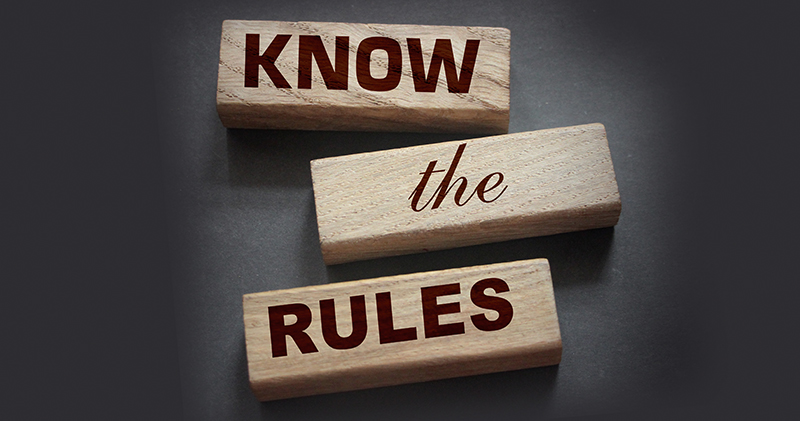Do Not Predict the Future, Create It
By Jeff Finkelstein
“Know the rules well, so you can break them effectively.”
— Dalai Lama XIV
“Learn the rules like a pro, so you can break them like an artist.”
— Pablo Picasso
“Calculate the odds of succeeding versus the odds of doing something incredibly stupid, then go ahead anyway.”
— me
After taking a brief journey into the realm of how we interact at meetings and why taking notes longhand is best, I am back on track with my usual pithy commentaries. Hopefully you will get something out of them or at least find them amusing. I guess we shall see…
For the next five or so articles I will be writing about many of my rules. In this first article they are about predicting the future. There are many who push ideas as “the future,” but rarely are they more than someone applying the first rule of sales (sell what you have). I am not going to get into specific technologies, but instead focus on ways to think about not where we are, but where we must be.
Let us begin with rule #1.
Jeff’s Rule #1: No one is a prophet in their own backyard
This is not only the first rule I wrote back in the 1980s but is a rule that has proven correct time and time again. When you work with people every day, they will not necessarily believe us when we show the technology path to be traveled. It does not matter how logical the thoughts, just that when they hear it from us, they will remember the stupid things we have done and figure we are that foolish all the time. Which may be true, but it does not necessarily mean the prediction is wrong. The thing to remember is those who know us best always remember us as we were. And let’s be honest, we are silly creatures who do things that at times cause us to shake our heads at ourselves and wonder what we were thinking.
If they hear the exact same thing from someone outside the group, department, or company, it will sound brilliant. As Marshall McLuhan famously said, “The medium is the message” (Understanding Media: The Extensions of Man, 1964). When Dr. McLuhan wrote the book, he was specifically talking about how the study of messaging, media in this case, is more about the technology than the messages it carries. I am taking great liberty interpreting it outside the original meaning, but it is so applicable to what a futurist does it would be a shame to waste it.
Simply put, your message is best when someone else delivers it. Remember that the next time you are trying to get alignment behind your ideas.
Jeff’s Rule #2: Predicting the future is easy when you have no skin in the game
To put it a different way, “success has many fathers, failure has but one.” Or in the original Latin “Prospera omnes sibi indicant, aduersa uni imputantur” (“Victory is claimed by all, failure to one alone”, Tacitus, ~98 AD).
There are many who will sit in meetings and throw out ideas as remarks, but not truly own them and do the work to make them a reality. If something succeeds, they will often be the first to claim it as theirs, but if it fails, they will be equally quick to disavow them as their ideas.
The reality as a futurist is that you must own both successes and failures. And those who get in the way of progress need to do the same.
Jeff’s Rules #3: Amateurs guess then apologize afterwards
Back when I was into woodworking, I took a class to learn how to make furniture. The instructor was fond of the saying “measure twice, cut once.” Applying the same logic to future thinking, we need to run multiple models and look for the commonalities between them. They do not necessarily have to be extensive mathematical models, sometimes just writing them down and working through the permutations is sufficient. You must however think things through and talk to others about them.
Being an amateur is not always a bad thing. Some very famous space discoveries have been made by amateurs. Amateurs created the Ark; experts created the Titanic. In almost every case these amateurs spent years perfecting their craft. Degrees sometimes just mean that an individual had the perseverance to make it through university, not that they are necessarily qualified.
Educated guesses are still guesses, but they are not pure fiction. Ground them in truth, do your homework, and be willing to change as new information is obtained.
Jeff’s Rule #4: The only thing constant is change, except from a vending machine
Change is hard. Books have been written about managing it. College courses have taught it. We have entire organizations dedicated to it. And yet, we still far too often fail at it. What are we missing? Why is it so hard?
I have no brilliant words about how to successfully change the state of things other than it takes time, hard work, persistence, and telling a compelling story. Change is necessary to the future. It is not easy.
We often see where we need to get as technologists, but to get there we must change how we approach the business. We are all in many ways resistant to change. My wife has been pushing me to replace the 20-year-old sofa in my office. I love that sofa. I put new foam into the cushions to get it back to the original firmness. It’s stained from grandkids, pets, dropped food, spilled drinks, and more. Part of it is I just don’t want to go through the hassles of finding a new one, but it is more about how to me this is my sofa, and it has been a good friend for a long time. I am resistant to changing my sofa.
Some of it is being afraid of the unknown. I know factually that when I was looking to replace my old sofa it took me over a year to find this one and about a year for it to break in for me. I don’t want to go through that again. I am in my comfy zone.
Therein lies the challenge. We get comfortable with things. Change is disruptive, but necessary to reach our next goal. Our job as futurists is to help people through that.
Jeff’s Rule #5: Do not look at future technologies wearing glasses from the past
How often have you heard the phrase, “That’s not how we do things here”? The saying “those who do not study history are destined to repeat it” is interesting, but there are times we need to take a leap of faith into the future. Just because we have always done something one way does not mean we should always do it the same way.
This pairs with rule #4 regarding resistance to change. We look at things from the perspective of today, not tomorrow. Things work today and work well, why should we change?
The answer is simple. Things work well today because of the changes we made in the past. There will be a point in which we look back at today as the dark ages of technology, but to get there we need to manage and allow the changes needed.
Jeff’s Rule #6: A technology cannot matter more to you than to your company
When I was younger, I thought about technology as a binary decision. Right and wrong. On or off. With me or against me. What I missed is that business is about customers, not the technologies we use. Customers need to access specific services, but rarely do they care about the technology they use to get there.
Back in the early days of data over cable services we allowed ourselves to get drawn into speed wars. We offer 10 Mbps, the competition offers 11, we have to offer 12. Wash. Rinse. Repeat. The fact that customers were only using single digit kilobits per second at peak didn’t enter the discussion.
Today is not much different. The average customer during peak hours uses 1%-5% of the capacity for their max speed downstream and upstream. Yet here we are trying to figure out how to provide 5 Gbps down and 1 Gbps up. Speed wars are mutually assured destruction for everyone.
To our companies, technology is a means to an end, not the end itself. As technologists we fall in love with technologies, particularly the ones we have been involved in creating. To our companies, it does not matter as much. It is all about meeting customer demand without leaving too much unused.
Focus on the company and industry goals, then find the technologies that can grow with those goals. It is not about us or our technologies, it is about meeting the customers’ and company’s needs.
Enough for now. Stay tuned for future forays into Jeff’s rules.
 Jeff Finkelstein
Jeff Finkelstein
Chief Access Scientist,
Cox Communications
Jeff.Finkelstein@cox.com
Jeff Finkelstein is the Chief Access Scientist for Cox Communications in Atlanta, Georgia. He has been a key contributor to engineering at Cox since 2002 and is an innovator of advanced technologies including proactive network maintenance, active queue management, flexible MAC architecture, DOCSIS 3.1, and DOCSIS 4.0. His current responsibilities include defining the future cable network vision and teaching innovation at Cox. Jeff has over 50 patents issued or pending. He is also a long-time member of the SCTE Chattahoochee Chapter and member of the Cable TV Pioneers class of 2022.
Shutterstock




